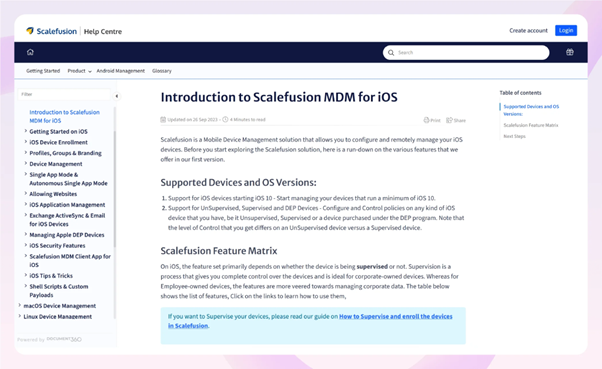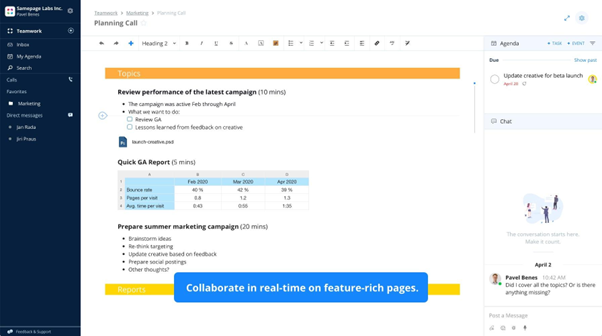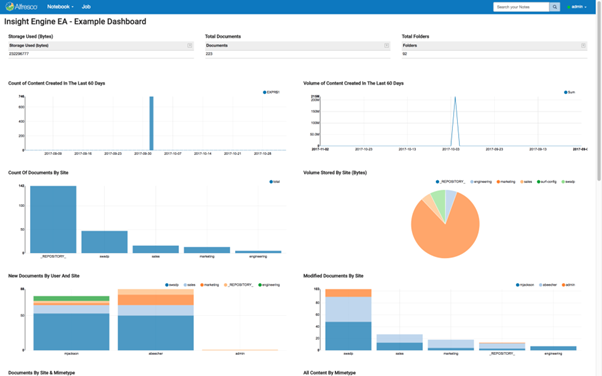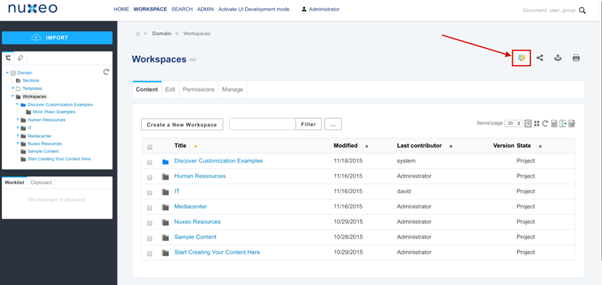Collaborating digitally and remotely is essential for today’s hyper-connected and often-distributed teams. Adopting intuitive and easy-to-use software is a priority for businesses that want to communicate, share knowledge, and publish content. As a result, many teams have turned to SharePoint to fulfill their internal communication needs.
SharePoint can’t do everything, but it is the first port-of-call for 200,000 organizations. Nevertheless, some of these businesses and many others are wondering about alternatives to SharePoint. If you want to use SharePoint, you cannot simply launch it out of the box. It must be customized and developed to do anything truly useful.
For teams to be connected digitally, other solutions rival SharePoint that are simpler to use and more cost-effective. We’ll explore some of them soon.
What Is SharePoint?

SharePoint is a platform developed by Microsoft. SharePoint’s primary purpose is to enable teams to collaborate and share documents. It’s an intranet that you can use internally, which integrates fully with Microsoft’s suite of Microsoft Office 365 tools. If you’re using Microsoft Office 365, it makes sense to adopt SharePoint for content management and document sharing.
One of the key features of SharePoint is its multi-use functionality. You’d be hard-pressed to find two businesses using SharePoint in the same way. There exist SharePoint developers and agencies dedicated to creating custom applications for businesses to use.
For example, you could set up an internal site containing a news feed and weather updates for your organization. You can build workflows to transform business processes. You can display business insights on the dashboard.
What are SharePoint’s Top Features?
SharePoint is a complex tool with a variety of use cases. You’ll have access to the following features:
- Document-sharing platform in the cloud – use SharePoint to share documents and knowledge that your team must easily access.
- Content management system (CMS) – Use SharePoint, like any other CMS, to create content for an integrated site.
- Collaborative website, document, calendar, or list maker – use SharePoint to create documents and websites with dynamic information for users on your intranet.
- Business intelligence (BI) platform – use SharePoint to display important data relating to your business in customizable dashboards.
In summary, organizations use SharePoint internally to communicate, share documents, collaborate, and enhance productivity.
What do Businesses Like About SharePoint?
There are some clear reasons to use SharePoint. 80% of Fortune 500 companies use SharePoint, and many find it to be adaptable. That means if you choose SharePoint, you can adapt it to your needs.
This flexibility is one of SharePoint’s strengths, you can add different web parts, apps, and workflows. However, it also has its downside, it requires proficient development resources to set up, manage, and maintain. Consider an Alternative to SharePoint.
Although SharePoint offers many advantages, businesses are frequently considering SharePoint alternatives due to some inherent limitations.
Limited Customization Options
Sharepoint gives an impression of flexibility, but you will only be able to develop Sharepoint according to Microsoft’s parameters. This means it might not be possible to achieve what you want with SharePoint, although you have added complexity.
It’s an unnecessary burden when you consider that there are existing tools with dedicated functionality that will help you achieve your goals. You won’t need to customize your solution as much if you choose the right tool in the first place.
Complex On-premise to Cloud Migration
Although Sharepoint promises the ability to migrate from on-premise to the cloud, the reality might not be as easy as you’d hope. Sharepoint Online is Microsoft’s cloud solution but slow load times and lengthy migrations complicate this process. For security and usability, you need seamless transitions between both options.
Remote and hybrid teams will likely need the online instance of whatever intranet or knowledge-sharing solution you use. They risk running into productivity and communication issues if they fail.
Compliance Issues
If you’re in a country that needs to adhere to the GDPR (General Data Protection Regulation) you’ll find that SharePoint does not necessarily comply with regulations out of the box. Although SharePoint is a widely used enterprise software, it’s up to SharePoint to ensure data compliance with GDPR standards. It’s all in how you use SharePoint.
This means you’ll need to configure SharePoint to meet the required standards. Thus, you can minimize regulatory risk and safeguard your users’ data. You cannot just trust that SharePoint meets the GDPR (or HIPAA, for that matter) if you want to use it in specific geographical or industry settings.
Less User-friendly than Newer Options
If you choose to use SharePoint, you’ll be relying on IT for updates and configurations. Users are less likely to adopt and engage with a platform when they need IT as an intermediary. SharePoint is built on an old model where users adapt to Sharepoint, rather than the other way around, where the UI encourages users to interact.
Many businesses and their users prefer software solutions that require little to no training. Their business is not disrupted, even when they adopt a new tool. Many options also integrate with Microsoft Tools such as Office 365 and SharePoint, meaning you can have the best of both worlds.
High Maintenance and Costs
You need dedicated developers, administrators, and other IT staff to manage Sharepoint for anything beyond its basic users. Plans for Sharepoint users are also not cheap, with monthly bills for Sharepoint running into the many thousands.
That means even if you want read-only users, you will still need to pay for a seat for them. It’s important to know that the median cost of implementing SharePoint Online internally is about $20,000, so consider your long-term budget before committing to SharePoint.
Schedule a demo with one of our experts to take a deeper dive into Document360
Book A Demo
Top 10 Alternatives for SharePoint
“If you don’t give people information, they make up something to fill the void.” — Carla O’Dell, author, management consultant
Not using a collaboration and document-sharing tool is not an option for modern businesses. Consider these alternatives to SharePoint.
1. Document360


If you like the familiarity of SharePoint but feel dissatisfied with some of its features and limitations, then you might consider moving to Document360. It is designed in a way that is easy to learn but avoids the complications of other, more complex tools. Document360 is a dedicated knowledge management system that is perfectly suitable for internal communication.
When you set up Document360, you create a knowledge base in minutes without any technical resources. Document360 demands simplicity, no complexity. Organizations can share knowledge easily with Document360, with no frills.
This means Document360 can scale much more easily as a knowledge-sharing platform. You can have a team of central administrators managing content for a much wider user base.
What’s Different About Document360?
Document360 is highly simple and intuitive, with a focus on content creation. Design your workflows in a way that suits you and controls who can access your knowledge base at a granular level. Analytics and reporting give insight into interactions with your content and knowledge base performance.
Moreover, Document360 is pioneering in adding AI features to the Knowledge base. Yes, it offers AI features to support better documentation and knowledge sharing. It has an AI writer, AI SEO description generator, AI title recommender, AI article summarizer, AI tag recommender, AI assistive search, relative article recommender, and more.


Consider one user review:
“I’ve been using Document360 for 2 years, and it’s notably improved how we manage our knowledge base. The user interface is intuitive, simplifying the process for my team to create and manage content efficiently. The search functionality stands out for its ability to quickly surface what we’re looking for, regardless of our content volume.
A noteworthy aspect is the platform’s commitment to innovation, demonstrated by the regular introduction of new features. Additionally, its flexibility is a significant advantage, allowing us to customize the platform to meet our specific needs.”
2. SamePage


SamePage is a project collaboration tool that gives you the ability to share files. Since being acquired by Paylocity in 2020, SamePage is also transitioning to become an employee engagement and team collaboration platform, ultimately striving for a much fuller set of features. They’re not taking new users at the moment but watch this space.
3. Huddle


Huddle is a document collaboration platform by Ideagen. If you operate in a regulated industry, then Huddle is the ideal solution for you. Huddle was designed to work with SharePoint and Microsoft 365 to supplement missing features. Create branded workspaces to share your documents internally. If you need to share sensitive information and review work securely, benefit from Huddle’s government-grade security. For Huddle, the emphasis is on compliance.
4. Google Workspace


You’ve likely heard of Google Workspace and maybe even used it. Businesses are increasingly committed to Google Workspace. It’s emerged in recent years as a real competitor to Microsoft 365. It can offer many of the features of SharePoint, such as document sharing, collaboration tools, and the ability to edit documents in real-time. The difference between Google Workspace and Microsoft is the simplicity and entry-level free plans, though Workspace is coming to rival Microsoft for the enterprise.
5. Box


Box is secure file-sharing software, including e-signatures and the ability to protect sensitive data. When you use Box, you can also edit files from any device and collaborate in real time. Workflows in Box accelerate productivity, which you can create using Box’s no-code builder. Box complies with FINRA, HIPAA, and GDPR to ensure that your data is always secure, no matter where you are in the world.
6. Alfresco


Alfresco is a platform for document management. It is owned by Hyland. Alfresco works with Google Docs and Microsoft 365, enabling you to extend your ecosystem with more features such as analytics and information governance. Maintaining your records can be difficult, but Alfresco makes it easy. Follow regulations and mitigate risk by using Alfresco alongside your usual tools.
7. Workzone


If you work with a creative team such as a design agency, then Workzone could be your project management tool. You can track each project visually and appealingly while measuring and improving results. Share, cooperate, and collaborate with project dashboards and secure internal file-sharing. You can even securely share files with external parties such as clients or contractors. Get notified when files are updated.
8. Nuxeo


Nuxeo is an open-source content management system that you can use yourself to build desired applications. The web UI means that even non-technical users can perform content management tasks easily with Nuxeo. Also owned by Hyland, Nuxeo is the ideal solution if you want total control over your document-sharing site and to be free of the restraints of conventional tools. Manage your digital assets effectively with Nuxeo.
9. Jostle


Jostle is an employee success platform that transcends time zones and siloes. Find the documents you need in Jostle while tracking changes, helping to avoid confusion. Jostle experiences more engagement from employees than traditional intranets by promoting cross-organizational discovery. Jostle’s Library enables you to organize content more effectively than the usual mess of files. Universal search also indexes directly within files, as well as searching people and events to enable you to find what you need.
Wrapping Up
Microsoft Sharepoint can disappoint many users looking for a sleek and intuitive solution. If you’re willing to move outside the Microsoft ecosystem, there are many options available for document sharing and collaboration that even integrate your most familiar tools. With an emphasis on the cloud, scalability, and security, Document360 is a top choice for teams of all shapes and sizes.
If your business heavily involves documents – and let’s face it, whose doesn’t? – you need highly intuitive document management software to help you collaborate and communicate. The hidden costs of implementing a solution like SharePoint make an out-of-the-box product like Document360 much more appealing.
Accomplish what you need to do instantly with a document-sharing tool like Document360 that transforms communication within organizations. Open up the pathways for information flow and break down silos for good.
An intuitive knowledge base software to easily add your content and integrate it with any application. Give Document360 a try!
GET STARTED







